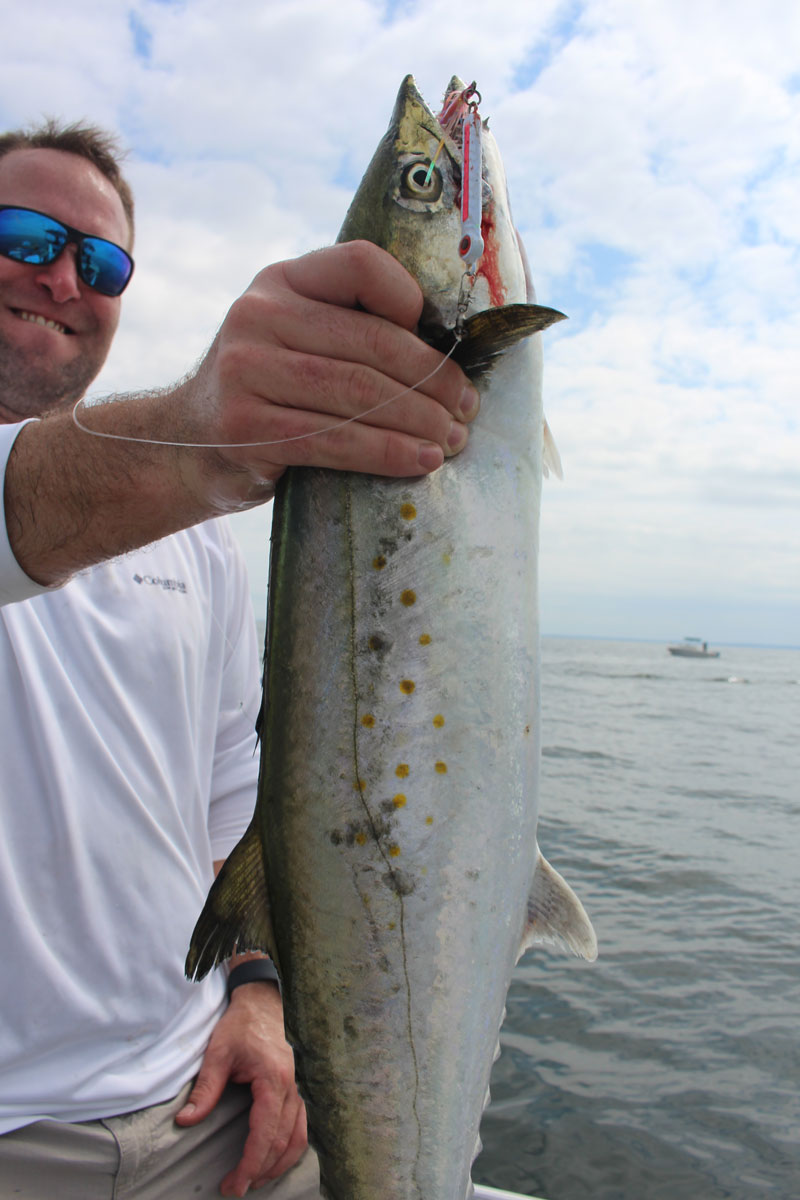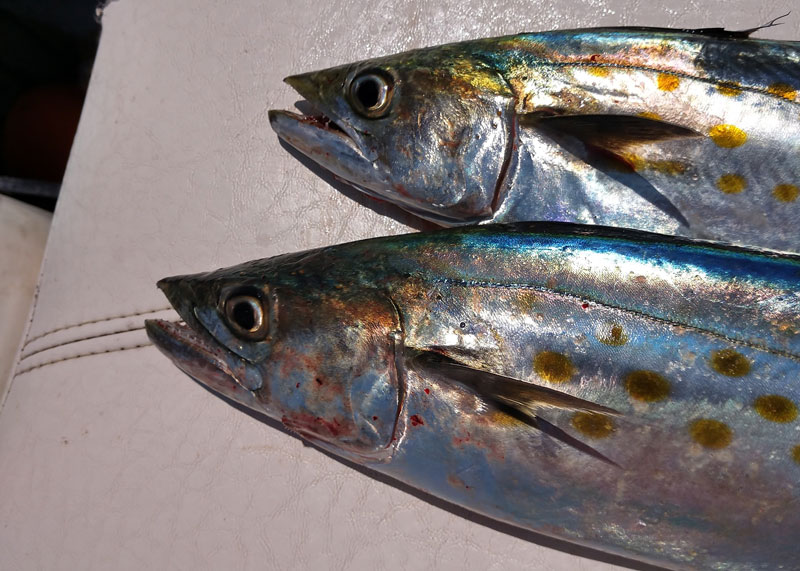Forgive me if you have heard this before, but a long time ago someone told me that the progression from beginner anglers to the uber-experienced goes from any fish to many fish, to big fish, and then to hard fish. In other words, when we first start fishing we just want to catch something… anything. Later it is all about filling the cooler with many fish. Then it becomes catching that big trophy fish. And finally, we go after those hard fish that only the best anglers can catch consistently. When we are talking about big Spanish mackerel, we are tapping both of those last two categories. “Big” is a relative term. For Spanish, anything over about 22 inches is big, and a fish over 26 inches is a trophy. For the purposes of this article, we are going to focus on those big Spanish mackerel — which are a lot harder to catch than the smaller, more common ones.

Targeting Monster Spanish Mackerel
Spanish mackerel may be targeted by casting or trolling. Both of these methods will work for larger macks. The gear for casting (which can be done from a boat or, in the southern parts of the Bay and along the coast, from a fishing pier) is simple. I use a lightweight spinning outfit with 10-pound test braided line. I attach about three feet of 20-pound test leader and tie on a “Gotcha” plug. These come in a large variety of colors. Actually, one of my favorite colors is pink. Most of these lures come with two treble hooks, but I prefer the ones that come with one treble hook and one single hook. In my mind, that is just a few less points for me to get stuck on. The hook choice doesn’t seem to affect the catch rate.
The plan is to cast straight out and retrieve with sweeping jerks. If you watch the lure, it will dart one way or the other each time you jerk the rod tip. You will notice some of the fishing pier regulars (we refer to them as “rail birds”) actually retrieve the lure with their rods pointed toward the water. If you can master that technique, it is more effective on the retrieve.
The other way to target Spanish mackerel is by trolling. For trolling I use conventional reels with 20-pound test braided line and Huntington Drone or Clark spoon. For many years my favorite rig for this included a number-one planer to get my spoon down. However, I have learned that using an inline weight of two to four ounces is often more effective when hunting for the big ones in specific. Attach a coast-lock snap swivel to the end of your running line. This swivel is then attached to the front of the weight, then another coast-lock snap swivel attaches to about 20 feet of 20-pound test leader material. About halfway down this leader add a very small black ball-bearing swivel. On the terminal end of the leader attach a spoon.
Using small spoons is common for Spanish, but for larger mackerel use larger spoons. For instance, when the macks are running small I will use a number-00 spoon (about 1.5-inches long) behind a planer. But for bigger macks I will switch to a number-one Drone, which is about three inches long, or a number-two, which is about 3.5 inches long, and swap the planer for the inline sinker.
When trolling for Spanish I always work in straight lines rather than circles. For some reason they seem to bite better that way. I will troll through the area I am targeting, make a big turn, and troll back in the other direction. On most days, the fish will hit more when I am trolling in one direction than the other.

Once the fish is on, simply reel in with the rod tip high until you reach the planer or weight. Handline the leader in the rest of the way. Keep it smooth and flip the fish into the boat. If it is a larger fish, you may want to use a net to land it
Finding Monster Mackerel
We have been blessed in the last few seasons to have larger Spanish mackerel in the Chesapeake. They may be found in a variety of locations. For casting, most of the piers in the lower Chesapeake Bay and along the oceanfront down into North Carolina can produce big fish, and I have heard of a good number of big Spanish caught from the end of the Buckroe Fishing Pier in Hampton during recent summer months. For trolling, they can show up anywhere throughout the Lower Bay and all the way north to the Bay Bridge as they chase bait. I lost my all-time personal best mack at the boat right off of the Chamberlain Hotel in Hampton last summer, and they seem to move further up the Bay each year. Last season, the Choptank River to Poplar Island produced an unusual number of king-sized Spanish mackerel.
A consistently good area is along the CBBT from inside the first island all the way to the Eastern Shore. I prefer working the area around the first and second islands. Trolling over the tubes of the tunnel and along the sides of the islands (about 200 yards out) has produced nice macks. I have also done well trolling along the bridge just past the second island on the up-current side.
Big ones may also be found along the oceanfront in Virginia Beach, anywhere from twenty feet deep out to the CB buoy line, and even out to the Chesapeake Light Tower at times. There have been big ribbon fish (cutlass fish) mixed in with the macks in the ocean in the past few years. You may even find some king mackerels or false albacore mixed in late in the summer.
Spotting the Spanish
Wherever you fish for mackerel, look for diving birds. One distinct difference between birds working over mackerel and those feeding over bluefish is that bluefish tend to ball up the bait while Spanish cut through the bait. If the birds are circling in one spot, it is probably bluefish. But if the birds are moving as they feed, they may be over mackerel. This isn’t a hard and fast rule, but it is a definite tendency. And of course, often the two species are working together over a school of bait, in which case all bets are off.
Once you catch one, concentrate in that area — they are schooling fish and where there’s one, there’s more.
-By Chuck Harrison